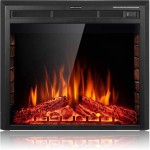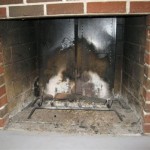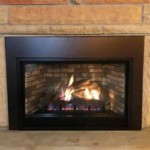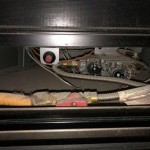Electric Fireplace: Troubleshooting No Heat Issues
Electric fireplaces offer a convenient and aesthetically pleasing alternative to traditional wood-burning fireplaces. They provide the ambiance of a flickering flame without the mess, maintenance, or safety concerns associated with open fires. However, one of the primary functions of an electric fireplace, providing supplemental heat, can sometimes fail. This article explores the common reasons why an electric fireplace might not be producing heat, along with troubleshooting steps to diagnose and potentially resolve the issue.
Understanding the basic components of an electric fireplace is essential for effective troubleshooting. Most electric fireplaces consist of a heating element, a fan, a thermostat, and a control panel. The heating element, typically a coil or infrared heater, generates heat. The fan then circulates this heat into the room. The thermostat regulates the temperature, switching the heating element on and off to maintain the desired setting. The control panel allows the user to adjust the flame effect, heat setting, and other features. A malfunction in any of these components can lead to a lack of heat output.
Power Supply and Electrical Issues
The first step in troubleshooting an electric fireplace that isn't producing heat is to verify the power supply. Ensure that the fireplace is properly plugged into a functioning electrical outlet. Test the outlet with another device to confirm that it is providing power. Check the circuit breaker or fuse box for tripped breakers or blown fuses. A tripped breaker or blown fuse can interrupt the flow of electricity to the fireplace, preventing it from operating.
If the outlet and circuit breaker are functioning correctly, examine the power cord of the electric fireplace for any signs of damage. Look for frayed wires, kinks, or exposed conductors. A damaged power cord can pose a significant fire hazard and should be replaced immediately. Do not attempt to repair a damaged power cord yourself unless qualified to do so. Replacing the cord with a new one is generally the safest and most reliable solution.
Some electric fireplaces are equipped with a safety thermal cut-off switch. This switch is designed to automatically shut off the fireplace if it overheats, preventing damage to the unit or surrounding area. If the fireplace has overheated, the thermal cut-off switch may have tripped. To reset the switch, unplug the fireplace from the power outlet and allow it to cool down completely. The reset button for the thermal cut-off switch is usually located on the back or bottom of the fireplace. Refer to the owner's manual for the specific location and instructions on how to reset the switch.
Another common issue is a faulty electrical connection within the fireplace itself. Loose wiring or corroded connections can disrupt the flow of electricity to the heating element. Inspect the wiring connections inside the fireplace, paying close attention to the connections at the heating element, thermostat, and control panel. If any loose or corroded connections are found, carefully tighten or clean them. Disconnect the fireplace from the power outlet before performing any internal inspection or repairs.
Thermostat Malfunctions
The thermostat plays a crucial role in regulating the heat output of an electric fireplace. If the thermostat is not functioning properly, it may not be signaling the heating element to turn on, even when the desired temperature is not reached. A faulty thermostat can also cause the heating element to turn off prematurely, resulting in insufficient heat.
To test the thermostat, start by ensuring that it is set to the desired temperature. If the thermostat is set too low, the heating element may not activate. Gradually increase the thermostat setting to see if the heating element turns on. If the heating element still does not turn on, the thermostat may be defective. A multimeter can be used to test the continuity of the thermostat. If the thermostat does not show continuity when it should, it needs to be replaced.
Some electric fireplaces have a digital thermostat with an electronic control panel. These thermostats may be more prone to malfunctions due to their complexity. If the display on the control panel is not working or the thermostat settings are not responding, try resetting the fireplace. Unplug the fireplace from the power outlet for a few minutes and then plug it back in. This may reset the electronic control panel and restore the thermostat's functionality. If the problem persists, the electronic control panel or the thermostat itself may need to be replaced.
Dust and debris can accumulate on the thermostat sensor, interfering with its ability to accurately measure the room temperature. Clean the thermostat sensor with a soft, dry cloth to remove any dust or debris. Avoid using any liquids or chemicals, as they can damage the sensor. Ensure that the sensor is not obstructed by any objects, such as furniture or curtains, which can affect its accuracy.
Heating Element Failure
The heating element is the component responsible for generating heat in an electric fireplace. Over time, the heating element can wear out or become damaged, leading to a reduction or complete loss of heat output. There are several types of heating elements used in electric fireplaces, including coils, infrared heaters, and ceramic heaters. Each type has its own lifespan and failure modes.
A visual inspection of the heating element can sometimes reveal signs of damage. Look for broken coils, discolored areas, or signs of arcing. If the heating element is visibly damaged, it should be replaced. Before replacing the heating element, unplug the fireplace from the power outlet and allow it to cool down completely. Refer to the owner's manual for instructions on how to access and replace the heating element. Ensure that the replacement heating element is the correct type and wattage for the specific model of electric fireplace.
A multimeter can be used to test the continuity of the heating element. Disconnect the heating element from the power supply and use the multimeter to measure the resistance across the terminals of the heating element. If the multimeter shows no continuity, the heating element is likely broken and needs to be replaced. Replacing a heating element usually requires some basic technical knowledge and tools.
Infrared heating elements, which are common in some electric fireplaces, can sometimes fail due to a burned-out bulb or a faulty ballast. If the infrared heater is not producing heat, check the bulb for any signs of damage. If the bulb is burned out, replace it with a new bulb of the same type and wattage. If the bulb is not burned out, the ballast may be faulty and need to be replaced. Replacing the ballast can be more complex and may require professional assistance.
Fan Malfunctions
The fan plays a crucial role in circulating the heat generated by the heating element into the room. If the fan is not working properly, the heat may be trapped inside the fireplace, leading to overheating and a lack of heat output. A faulty fan can also cause the fireplace to shut off prematurely due to the thermal cut-off switch tripping.
Check the fan for any obstructions that may be preventing it from turning. Dust, debris, or foreign objects can accumulate around the fan blades, causing them to become stuck. Clean the fan blades and surrounding area with a soft brush or vacuum cleaner. Ensure that the fan blades can rotate freely without any resistance.
The fan motor can also fail, preventing the fan from turning. If the fan blades are free of obstructions but the fan is still not working, the fan motor may be defective. A multimeter can be used to test the continuity of the fan motor. Disconnect the fan motor from the power supply and use the multimeter to measure the resistance across the terminals of the motor. If the multimeter shows no continuity, the fan motor is likely broken and needs to be replaced.
Some electric fireplaces have a fan speed control that allows the user to adjust the speed of the fan. If the fan speed control is set too low, the fan may not be circulating enough air to effectively distribute the heat. Increase the fan speed setting to see if the heat output improves. If the fan speed control is faulty, it may need to be replaced.
Lubricate the fan motor bearings periodically to ensure smooth operation. Over time, the bearings can become dry and stiff, causing the fan to run slower or not at all. Apply a small amount of lubricating oil to the bearings to keep them running smoothly. Refer to the owner's manual for the recommended type of lubricating oil and the location of the bearings.

Northwest 54 In No Heat Led Fire And Ice Electric Fireplace With Remote Black M022006 The Home Depot

Electric Fireplaces That Don T Give Off Heat Direct

Electric Fireplaces Without Heat Stylish

Electric Fireplaces That Don T Give Off Heat Direct

New Design Home Decorative Electric Fireplace No Heat With Pebbles Stones China Made In Com

Northwest 54 In No Heat Led Fire And Ice Electric Fireplace With Remote Black M022006 The Home Depot

Northwest 54 Inch No Heat Wall Mount Electric Fireplace With Remote Black Com

Smart Design Artificial Fire 3d Decor Flame Insert Electric Fireplace No Heat China Made In Com

Northwest 54 In No Heat Led Fire And Ice Electric Fireplace With Remote Black M022006 The Home Depot

Touchstone 50 In W Black No Heat Electric Fireplace The Fireplaces Department At Com
Related Posts








